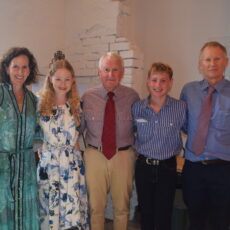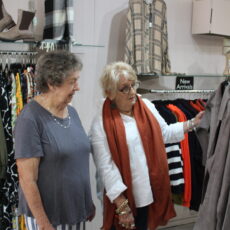A celebration of National Wattle Day took place at the NSC Narrabri Region Visitor Information Centre on Friday, September 1, the first day of spring.
On the first day of September, Australians across the nation welcome spring with National Wattle Day.
The annual celebration commemorates the seasonal change by recognising our national floral emblem and all that it represents for the Australian people.
There are over 1300 known and classified Wattle species, most of which can only be found in Australia.
Although most are endemic to Australia, they can also be found right around the globe, from the Pacific region to the Mediterranean, throughout Asia, Africa and the Americas.
The current abundance of the Acacia species of yellow wattle trees in the region are an annual spectacle which conjure enthusiasm and a desire to see these trees established in our own gardens.
Despite their prolific growth in native environments on often dry, arid ground, difficult soils and harsh climates, the mystery of how we should go about growing wattle trees at home was solved with informative talks by guest speakers Aboriginal heritage conservation officer (Heritage NSW) Steven Booby and Narrabri Shire Council open space coordinator Aaron Bean.
Mr Booby opened the event with an acknowledgment of country and captured his audience with an enthused explanation of what acknowledgement to country really means to the aboriginal community – an opportunity to show respect for country and the birthplace of Aboriginal ancestors, traditional cultural practices and owners, and the continuing connection of Aboriginal peoples to all things born from their ancestral lands.
Mr Booby spoke of the endurance of thousands of years of Aboriginal heritage.
Aboriginal people are known to have occupied mainland Australia for at least 65,000 years.
It is widely accepted that this predates the modern human settlement of Europe and the Americas.
Great tracts of land are now known by the Aboriginal names for the wattles that grow there, for example Myall (Acacia pendula), Mulga (Acacia aneura), Brigalow (Acacia harpophylla) and Gidgee (Acacia cambagei).
Wattle wood is very hard and has been used as the perfect formation for the carving of boomerangs for thousands of years.
After a break for morning tea, NSC open space coordinator Aaron Bean took to the floor and offered attendees an insight into different species of wattles and what grows best in our locality.
There was a display of complementary wattle tree tubestock on offer for visitors to take home and listed among those suitable for the Narrabri region.
These included the Mulga Wattle (Acacia Aneura), well drained medium to light soils and lime tolerant; Box Leaf Wattle (Acacia Buxifolia), sandy, clay or loam soils; Knife Leaf Wattle, Half-Moon Wattle (Acacia Cultriformis), clay-loam to sandstone soils; and the Mount Morgan Wattle, also known as the QLD Silver Wattle (Acacia Podalyriifolia), which is tolerant of most soils.
Many wattle species are short-lived with a lifetime spanning a mere 8-15 years.
Mr Bean recommended planting a new tree nearby before the culmination of this timespan to establish the young plant early, ready to replace the original tree when it reaches the end of its life.
Our regional soil conditions are known to be high in pH, somewhere between 7.5 to 9 pH levels (native plants prefer 4.5-6).
Two materials commonly used for lowering the soil pH are aluminium sulphate and sulphur. Aluminium sulphate will change the soil pH instantly because the aluminium produces the acidity as soon as it dissolves in the soil.
Wattles prefer full sun but will tolerate some shade.
The rapid growth of wattles protects bare soil, often preventing erosion.
They can also fix nitrogen that provides nutrients for other plants and restores the fertility of the soil.
The trees have a component encased in their roots which hold nitrogen, and being short lived, they provide this service while other slower growing species catch up and establish themselves.
A food source for butterflies, and an attractor of birds, wattles have a strong smell which can bring in bees, wasps, beetles and witchetty grubs.
They are a great habitat for small birds, providing shelter, perching and nesting sites, with the added bonus of attracting insects and producing seeds for them to eat.















